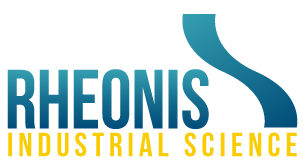What is a Behavioral Instrumental Technique?
Historical core of the RHEONIS approach, Behavioral Instrumental Techniques designate the different techniques for measuring the dynamic properties of matter, capable of quantify the responses of matter, its mixtures and reactions to various physical constraints (thermo-mechanical, fluidic, rheological, tribological, vibratory, textural, interfacial, etc.).
Objectives
Behavioral instrumental techniques make it possible toanticipate the specific effects of a process or operating conditionsapplication on the behavior and transformation of matter, with various purposes:
- Make formulation and innovation more reliable
- Evaluate the performance of candidates
- Understand the causes and solve the problems
- Optimize the conditions of implementation
- Develop predictive methods or improve internal controls
Principle of use
Any instrumental device making it possible to impose physical constraints (flow, compression, elongation, vibration, thermal, etc.) and to ensure at the same time the measurement of certain parameters can be qualified as a behavioral technique.
Common techniques include rudimentary empirical techniques (Cup of viscosity, Bostwick consistometer, etc.), standardized techniques (viscometer, volumemeter, texturometer, etc.) or more sophisticated scientific techniques (rheometer, tribometer, DMA, etc.).
Depending on the configuration and the degree of sophistication of the technique, different states of matter can be studied (powder, fluid, pasty, semi-solid, soft or hard material,…) and the conditions of implementation more or less modified and controlled. (see article "a little history of viscometer and rheometer")
Valuable assets for the study of industrial phenomena
Behavioral instrumental techniques equip most industrial laboratories. Unfortunately, their use is often constrained by quality control logics limiting the scope of their use (see the article “Behavioral techniques: from quality control to instrumented micro-pilots”)
Where measurement standards set the implementation conditions for extracting a value, behavioral instrumental techniques make it possible, on the contrary, to exploit various configurations of constraints and measurement. Thus, it is possible to access crucial information, at the scales of interest, to understand and control phenomena by (1) drastically limiting the use of industrial tests, (2) the quantities of materials consumed and (3) by constituting a knowledge base of these crucial material behaviors for competitiveness.
Last Updated on October 26, 2021 by Vincent Billot
